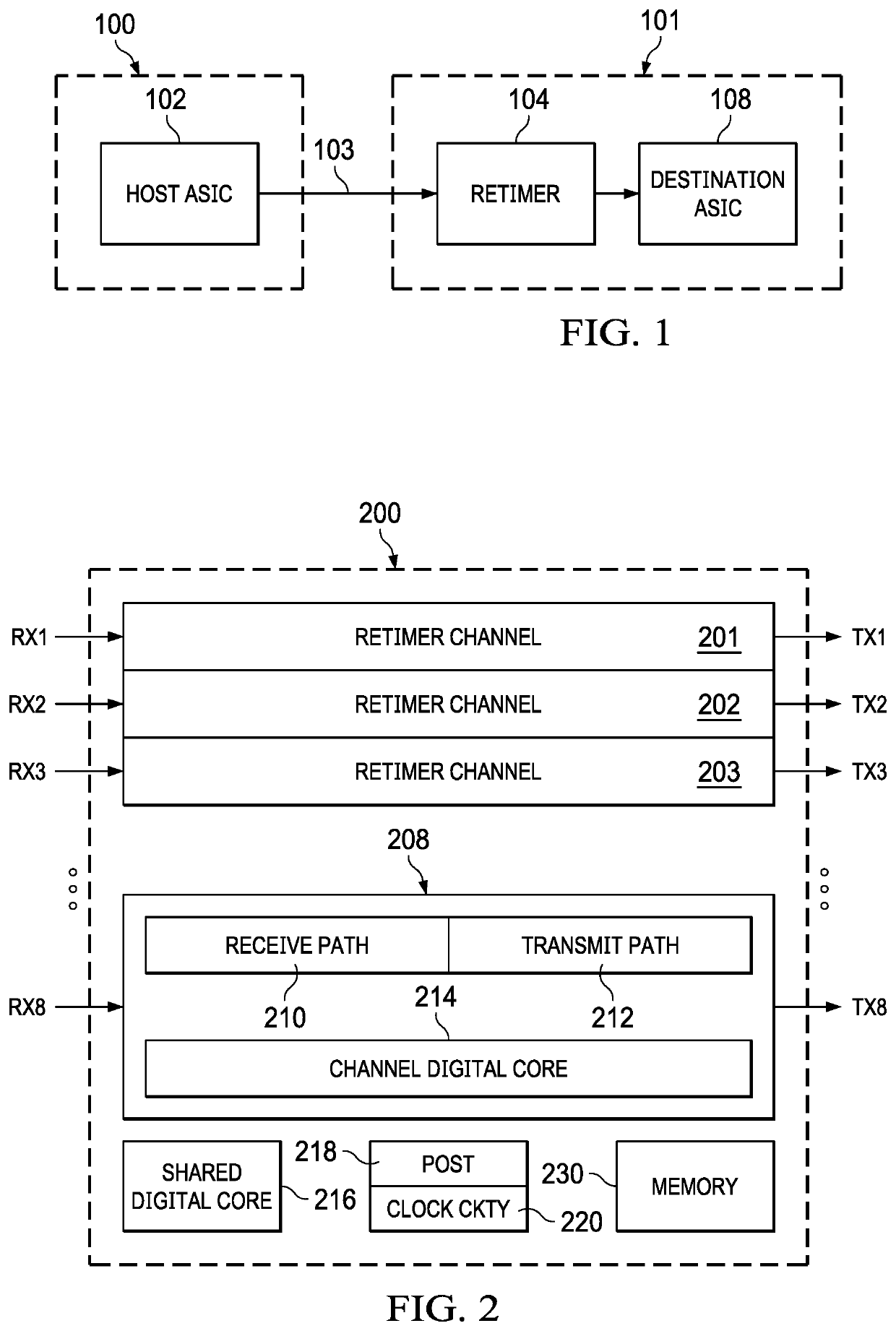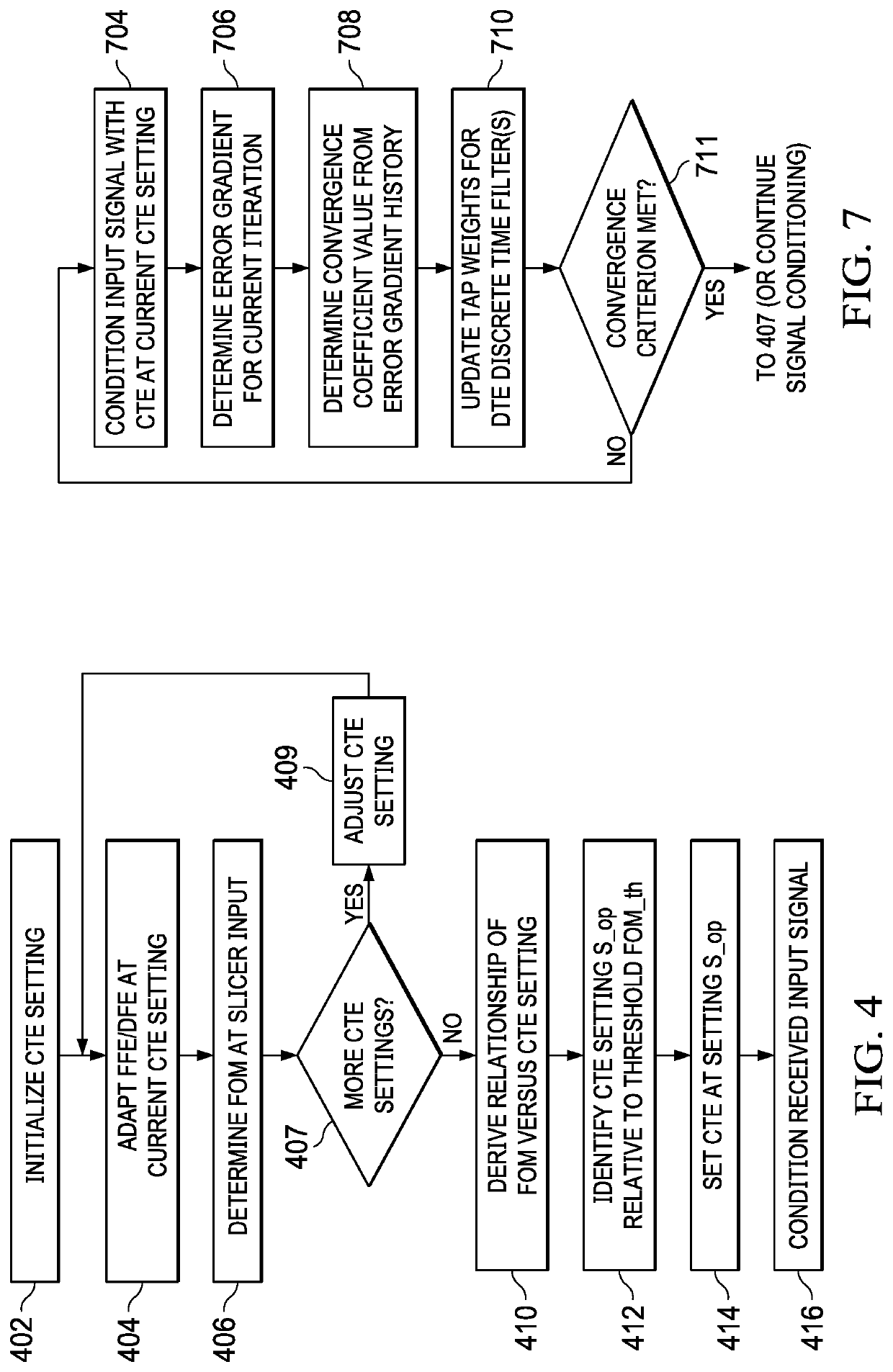Lane adaptation in high-speed serial links
a high-speed serial link and lane adaptation technology, applied in the field of data communication, can solve the problems of increasing data rate at the cost of poorer signal-to-noise ratio, slow conventional approach, and meeting the needs of newer communication technologies, so as to reduce the time of lane adaptation and accelerate post-initialization re-adaptation.
- Summary
- Abstract
- Description
- Claims
- Application Information
AI Technical Summary
Benefits of technology
Problems solved by technology
Method used
Image
Examples
Embodiment Construction
[0024]The one or more embodiments described in this specification are in the context of adaptive equalizer circuitry and methods of lane adaptation in retimers used in high-speed serial communication technologies, for example in high speed (200G / 400G) Ethernet and 5G wireless communications, as it is contemplated that implementation of these embodiments is particularly advantageous in such contexts. However, it is also contemplated that aspects of these embodiments may be beneficially applied in other applications for adaptive equalizers, for example in the receive path of a network node or infrastructure node in other communications applications and using any one of a number of signal modulation schemes, in data transfer paths within individual apparatuses, in other hardware systems such as artificial intelligence (AI) processors, network processors, and the like. Accordingly, it is to be understood that the following description is provided by way of example only and is not intend...
PUM
 Login to View More
Login to View More Abstract
Description
Claims
Application Information
 Login to View More
Login to View More - R&D
- Intellectual Property
- Life Sciences
- Materials
- Tech Scout
- Unparalleled Data Quality
- Higher Quality Content
- 60% Fewer Hallucinations
Browse by: Latest US Patents, China's latest patents, Technical Efficacy Thesaurus, Application Domain, Technology Topic, Popular Technical Reports.
© 2025 PatSnap. All rights reserved.Legal|Privacy policy|Modern Slavery Act Transparency Statement|Sitemap|About US| Contact US: help@patsnap.com



